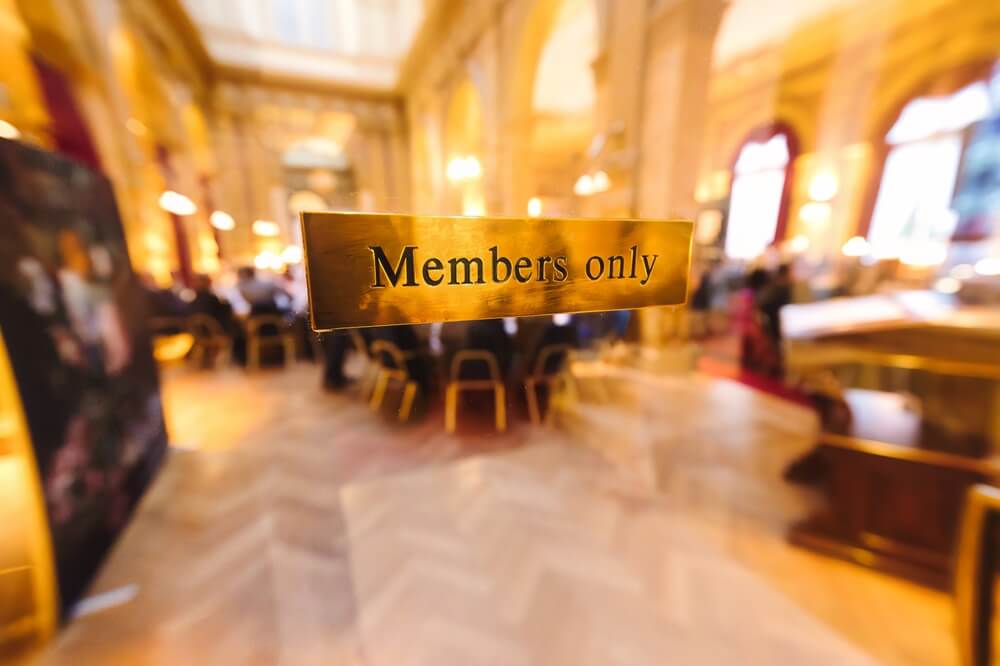A dispute that has divided the nation appears on the brink of resolution as London’s prestigious all-male Garrick Club prepares for a vote on admitting women as members for the first time in its 193-year history.
To precis the column acres dedicated to the issue in newspapers of the better sort, this anticipated triumph for the sisterhood signals the inevitable transformation of yet one more exclusive institution confronting the reality of a supposedly more egalitarian Britain.
If the decision goes the right way, membership will theoretically be open to any woman who can find the necessary (male) sponsors, can stump up the rumoured £1,600 a year fee, and is patient enough to spend up to five years on the waiting list.
Those of a Marxist persuasion - Groucho famously said he would not want to belong to any club that accepted him as a member - may be left wondering what all the fuss is about.
Surely a ‘yes’ vote, such inveterate unclubbables surmise, will merely allow privileged establishment women to join equally entitled males in sharing the tangible and sometimes intangible benefits of membership.
For entry to the grey Victorian pile on the edge of London’s theatreland opens the door not just to lunch, cocktails and gossip, but also to the comforting glow of belonging to a self-selecting and in-the-know elite.
Outlier in clubland
The Garrick is something of an outlier in clubland, ostensibly appealing to an artistic set of celebrities and theatricals rather than the dozing ranks of ex-colonels, former civil servants and minor aristocrats who have traditionally favoured the more staid establishments that line Pall Mall.
Members also include the ubiquitous mix of lawyers and politicians and a sprinkling of journalists, the presence of the latter perhaps explaining the level of media attention that the Garrick’s moment of truth has attracted.
The Guardian set the ball rolling by publishing the names of some of its 1,500 members, including senior lawyers, heads of cultural institutions, cabinet ministers, the head of the civil service, the UK’s top spy and even King Charles.
The newspaper, considered by social conservatives as the self-regarding journal of the liberal wokerati, said the full list revealed the Garrick’s central position as a bulwark of the British establishment.
The same designation could be applied to any number of the surviving clubs established in the late Georgian period, from the Travellers to the Reform, the Carlton to the Army and Navy. White’s traces its origin to 1693 and a Mayfair hot chocolate shop founded by a Signor Bianco.
In some cases membership reflected the political Whig-Tory divisions of the times. But, unlike their European counterparts, where benighted continentals would plot the downfall of whichever despotism was oppressing them at the time, the London clubs reflected the self-assurance of an established ruling class.
A home from home
The clubs provided a home from home for provincial landed aristocracy, returning colonial administrators and retired officers. That did not exclude the occasional social climber, a category that the British establishment has always shown great perspicacity in incorporating into its ranks.
But to return to the Garrick: the media revelations prompted a brief scramble for the exit as four senior judges, the cabinet secretary and the head of MI6 resigned their membership, the latter reportedly concerned that his continued association with the club would undemine his agency’s efforts to recruit more female spies.
Sir Richard Moore had previously argued that he could better advance the feminist cause by operating under cover inside the Garrick.
With more departures likely, the club looks almost certain to accept the inevitable in an all-members vote, just as other establishments have already done. The exclusive Pratt’s abandoned its men-only rule a year ago in a diktat from its aristocratic proprietor, the Earl of Burlington, and the governing committee.
Some traditionalists have argued that opening the floodgates to women is the thin end of a culture wars wedge. Anti-woke warrior Laurie Wastell argued in the European Conservative that caving to the mob would be further proof that British public life had been thoroughly colonised by leftist politics.
“Whichever way the vote goes, the controversy has demonstrated just how extensively the new orthodoxy of equality, diversity, and inclusion has come to dominate Britain’s public life,” he railed.
Cultural solidarity in class-ridden Britain
Maybe Wastell has missed the point. Britain’s mutually supportive establishment has always displayed a remarkable talent for perpetuating itself while adapting to the fashions and preoccupations of the times. Outside visitors to Pall Mall’s most exclusive haunts are now appalled to find they are no longer required to wear a tie!
 Britain’s mutually supportive establishment has always displayed a remarkable talent for perpetuating itself while adapting to the fashions and preoccupations of the times
Britain’s mutually supportive establishment has always displayed a remarkable talent for perpetuating itself while adapting to the fashions and preoccupations of the times
The tendency to congregate with those with whom they share outlooks and interests is seen as a hallmark of the clubbable British. From fly-fishers to golfers and from lawyers to bureaucrats, people will inevitably seek the company of their own kind.
The Georgian fashion for gentlemen’s clubs was followed by a period in which Working Men’s clubs emerged, gathering a growing industrial proletariat in London and the provinces.
Many survive, generally having morphed into more gender neutral Social Clubs. Some began life as temples of temperance, an obsession they swiftly abandoned.
In a remarkable example of cultural solidarity in class-ridden Britain, they have traditionally shared with their up-market counterparts in Pall Mall and Mayfair an unfading commitment to booze and billiards.